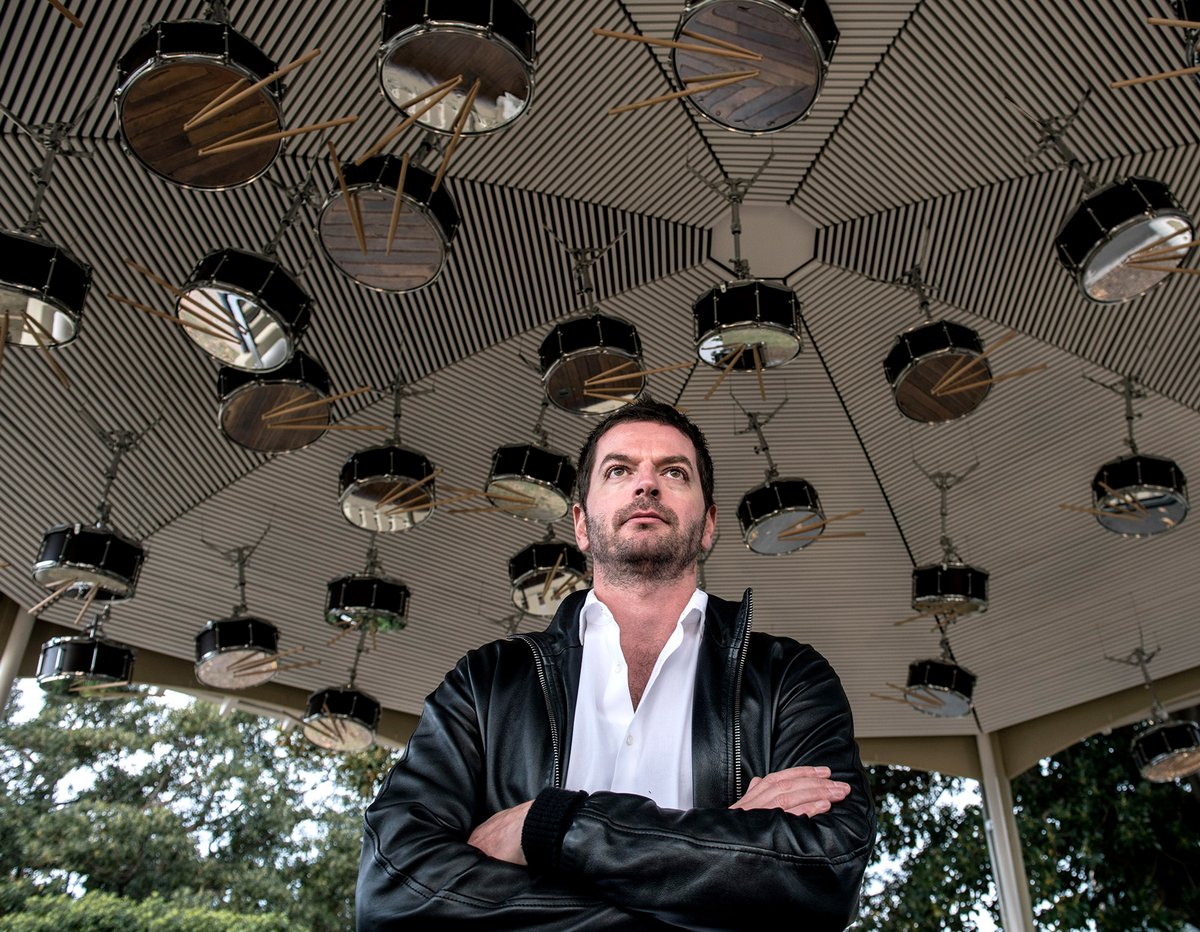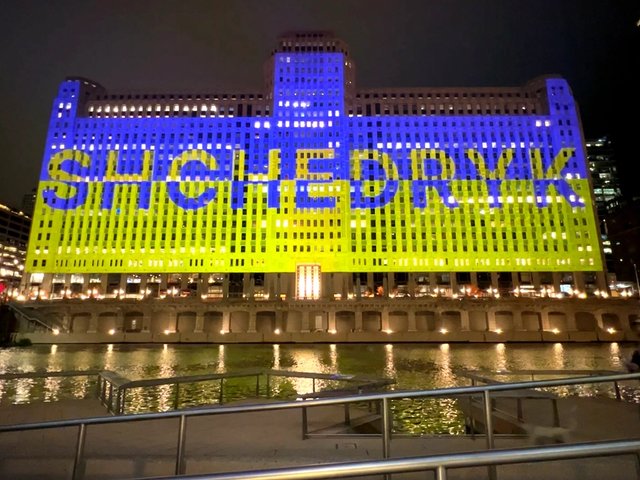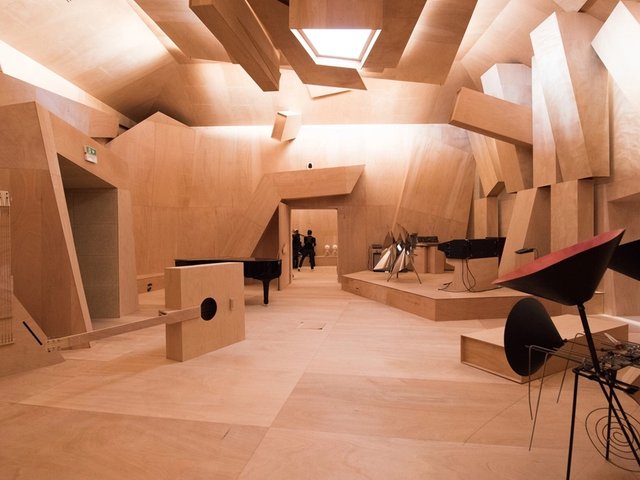The French-Albanian artist Anri Sala has used snare drums and a Mozart concerto to transform a modest wooden rotunda into a public art project that ruminates on the impact of European settlement in Australia.
Located at the highest point in Sydney Harbour, Observatory Hill Rotunda was constructed in 1912 to accommodate musical performances in a park that overlooks the famous Sydney Harbour Bridge. For three weeks, the rotunda is home to The Last Resort, an installation commissioned by Kaldor Public Art Projects.
Inside the octagonal-shaped bandstand, Sala has affixed 33 identical snare drums, with matching pairs of drum sticks and mirrored skins facing down. Throughout the day, the drums gently accompany a recording of the second movement of Mozart’s Clarinet Concerto in A major (K 622), written in 1791 and played by the Munich Chamber Orchestra.
If there is technology present, it is noticeable only by its absence; there are no speakers, wires or motion sensors and it is not clear whether the wind, or an unseen force, is responsible for the beat of the drums.
The Last Resort is the latest in a series of public art projects commissioned by the prominent Australian philanthropist John Kaldor. What began with Christo and Jean-Claude wrapping a section of Sydney’s coastline in Wrapped Coast (1969) has become a five-decade-long obsession that has delivered 33 public art projects from a wide range of artists such as Marina Abramovic, Jeff Koons, Santiago Sierra and Ugo Rondinone.
“I’m really indebted to Anri, that he spent an enormous amount of time researching this work and establishing a connection between Europe and Australia at the time of the First Fleet,” Kaldor tells The Art Newspaper ahead of the official opening.
Sala found his connection while searching for a piece of music that was contemporary with the arrival of the First Fleet in Australia. What he discovered was Mozart’s Clarinet Concerto, a masterpiece of the Age of Enlightenment and one of the last works he wrote before his death in 1791.

Photo: Steven Siewert
“I’m very interested in approaching a piece of music […] as a fossil, an artefact that is very telling of the period in which it is produced. In that sense, Mozart’s piece is very telling about the European Enlightenment,” Sala says.
For Sala, the Age of Enlightenment was a paradoxical time: it produced masterpieces such as Mozart’s Concerto, and simultaneously sanctioned atrocities against the indigenous population of Australia. “There is this very contradictory relationship between Enlightenment and the darkness that it […] automatically produced once this very same enlightened civilisation […] imposed itself on other shores,” he says.
In The Last Resort, Sala has replaced Mozart’s tempo indications with wind descriptions lifted from James Bell’s Private Journal of a Voyage to Australia (1838). “I was interested in this idea of how an artwork travels […] and what would happen to it if it was put in a bottle and let it be under the mercy of the will of a force majeure,” Sala says.
• The Last Resort, until 5 November, Observatory Hill, Sydney





